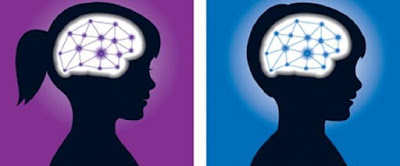What is choline ?
Choline is a primary, monohydric alcohol and a quaternary ammonium salt. It was discovered in 1849 and in 1866 for the first time synthetically. Choline is a nutrient that either through diet can be ingested, as can be created in the body. It is one of the few organic materials which is capable of the blood-brain barrier. It is important for the structure of the cell membrane and other membrane structures, as well as for neurotransmission. Choline is important for the development of the brains, and is found in large quantities in breast milk. A deficiency may have a negative impact on brain development, and cognitive functions.
History
Choline was discovered by Adolph Strecker for the first time in the bile of pigs in 1849 and characterized in 1862 and named. In 1866 and 1867, it was first chemically synthesized independently by Adolf von Baeyer and Charles-Adolphe Wurtz.
Appearance
Choline is a very common substance in living beings. In the form of the acetic acid ester is the material of the neurotransmitter acetylcholine, in the form of the phosphoric acid ester is a component of lecithin (phosphatidylcholine), as well as between the product of metabolism.
In foods is choline, both in free form for as bound as sphingomyelin or phosphatidylcholine (lecithin). The highest levels are found in egg yolk, but also beef, chicken meat, fish, organ meats (liver), and soybeans are rich sources. In smaller amounts it is present in cereals (e.g. wheat germ) as well as in fruit and nuts.
In monogastric animals choline is also absorbed from the food, because choline is present as a component of phosphatidylcholine in the cell membrane. Ruminants are an exception, as choline is almost completely degraded in rumen.
Choline never comes as such, but it is always accompanied by a negatively charged counter ion, such as chloride (choline chloride).
There are also dietary choline. These supplements usually contain glycerofosfocholine, phosphatidylcholine, and choline bitartrate.
Biological function
Formerly known as vitamin was choline, and was, like adenine, referred to as vitamin B4. It was thought that if there is no question of certain amino acid deficit (in particular lysine and methionine), choline in a sufficient degree by the body can be made. In 1998 it was recognized as an essential nutrient choline and were recommended daily amounts for adoption. This meets choline to the original definition of a vitamin, as prepared by Casimir Funk: it has an amine structure and is essential for maintaining health. Although the body in small amounts choline itself can create, it must be present in the diet.
- Choline is required for the biosynthesis of the important neurotransmitter acetylcholine, which is important for the momentum transfer in the nervous system. The biosynthesis of acetylcholine takes place by the transfer of an acetyl group by the enzyme choline acetyltransferase. In the reverse reaction is acetylcholinesterase responsible for the hydrolysis of this ester in acetic acid and choline.
- Various carboxylic acid esters of choline, such as succinylcholine (also known as suxamethonium), act as agonist of the acetylcholine receptor, without rapid degradation can take place by existing cholinesterases. After a short excitation leads to a prolonged depolarization and therefore muscle relaxation.
- Choline is required for the making of lecithin. The emulsifier lecithin has a grease regulating action and prevents cholesterol from settling in the veins. Lecithin consists to a large proportion of phosphatidylcholine.
- Choline can be oxidized to betaine, the zwitterionige trimethylglycine. Betaine is in addition to folic acid, s-adenosylmethionine, and Vitamin B12 an important methyl group donor in the metabolism. The conversion of choline to betaine is a two-step oxidation process which takes place in the mitochondria of the liver and kidneys. The methyl groups can be utilized in the homocysteine metabolism. A deficiency of methyl groups causes hypomethylation of the DNA. DNA hypomethylation is associated with almost all types of cancer.
- Choline is phosphorylated by choline kinase. The resulting zwitterionige O-phosphocholine serves as a starting material for the biosynthesis of phosphatidylcholines, as essential constituents of biological membranes, such as the cell membrane, are.
- Choline also acts as a lipotrofe factor, and can prevent the storage of fat in the liver.

